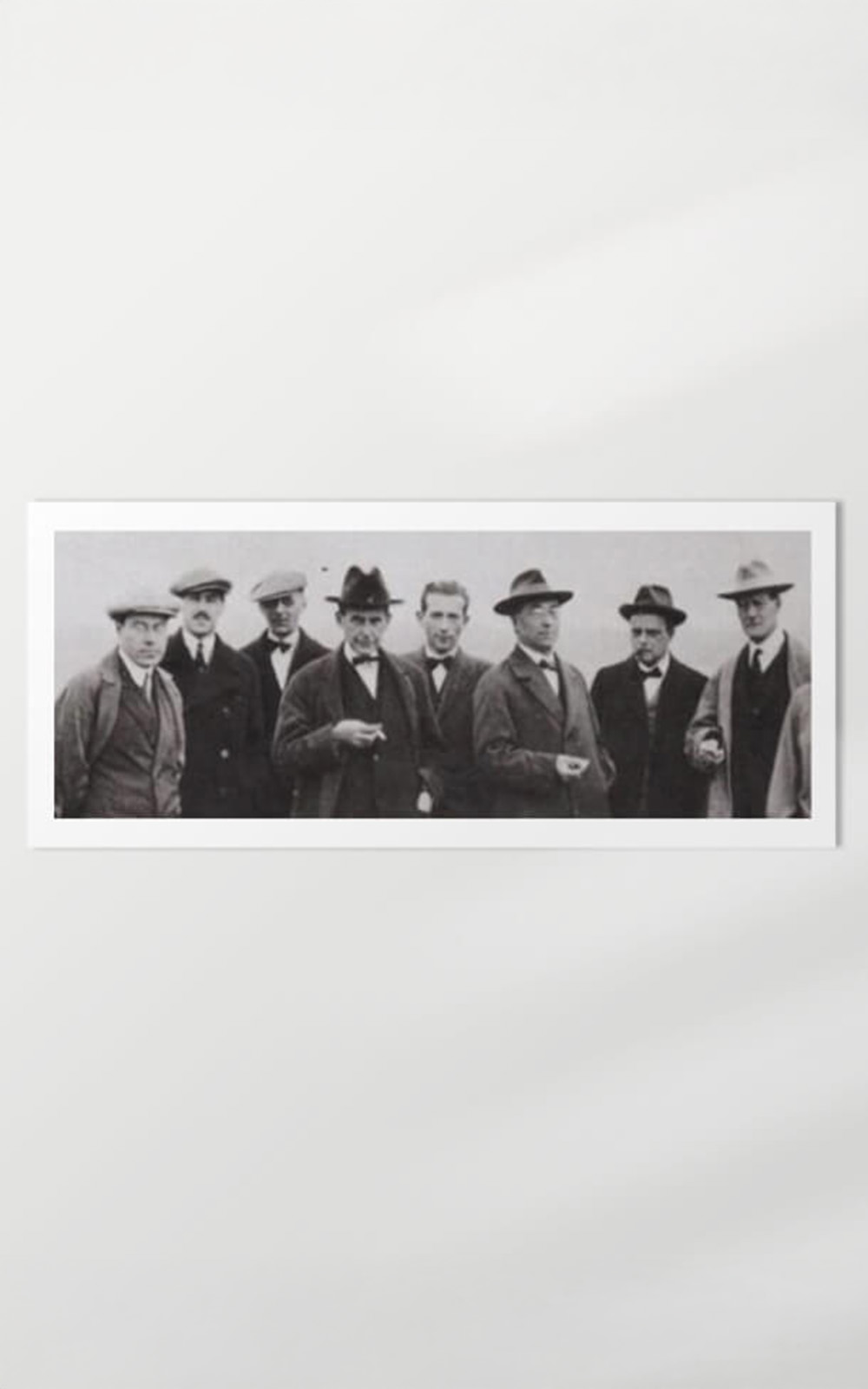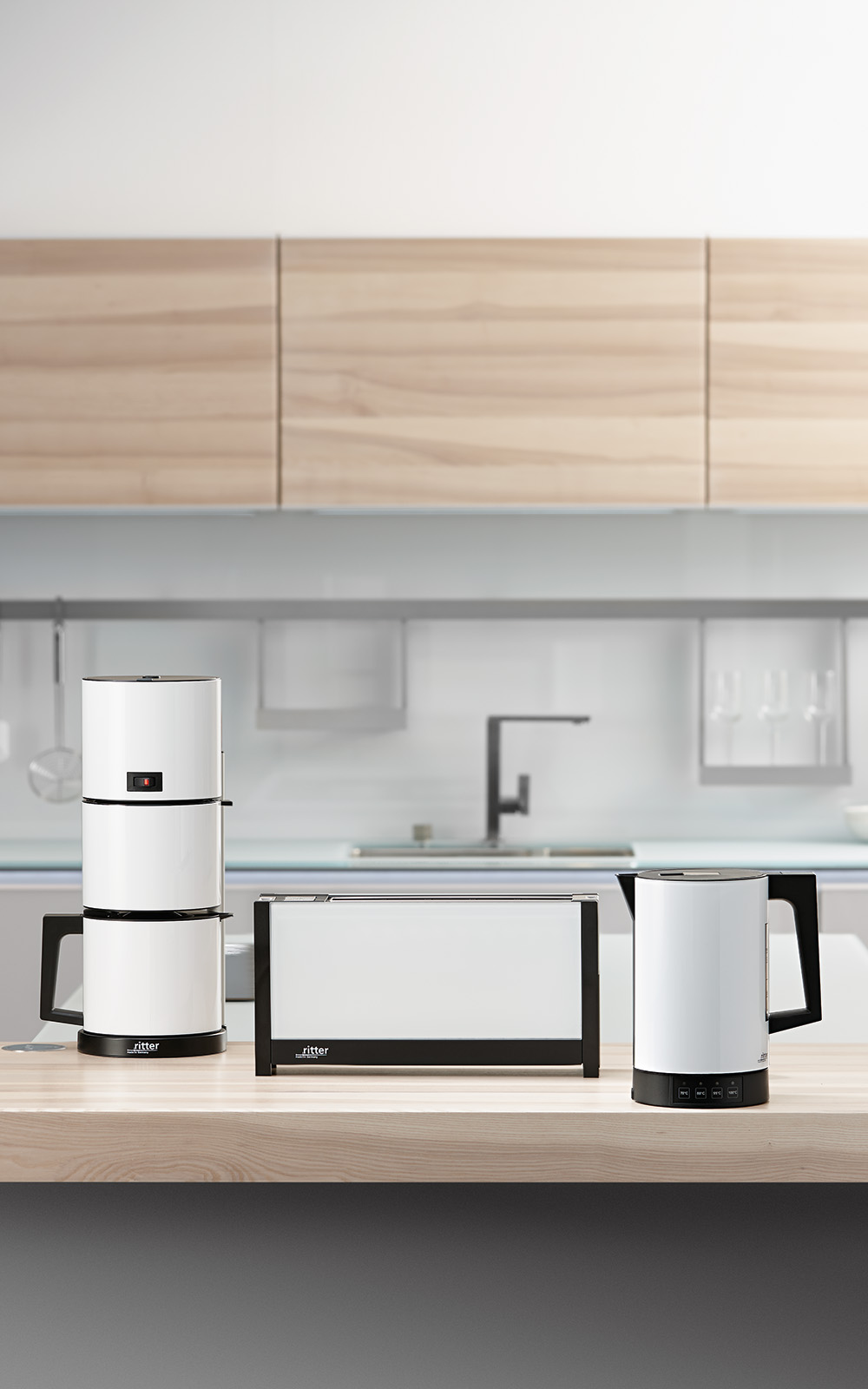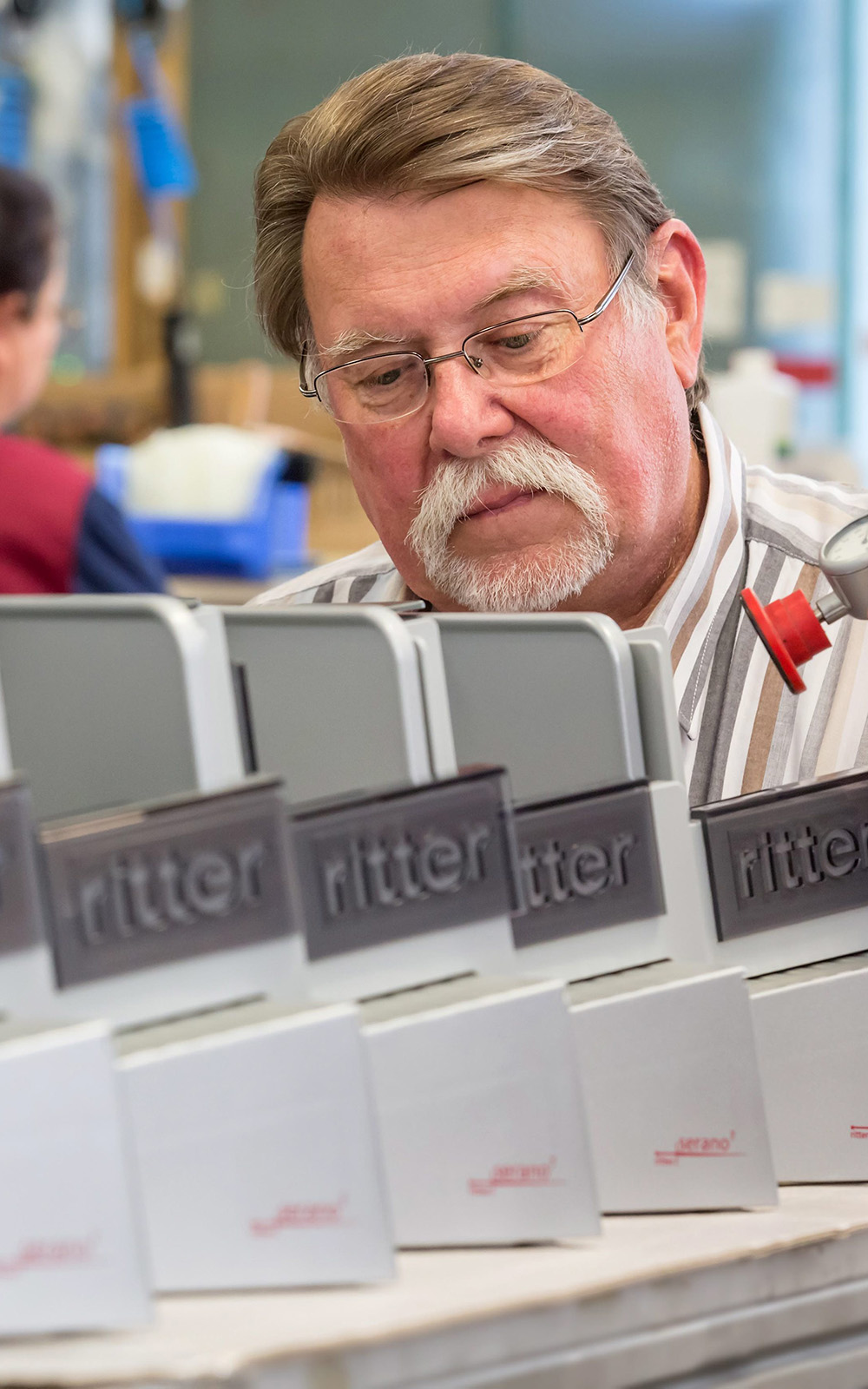Company
ritterwerk and Bauhaus tradition
ritterwerk, with a history dating back more than 100 years, is also a contemporary of the Bauhaus movement, which has its origins in the Bauhaus school of art and design existing in Germany between 1919 and 1933. The Bauhaus was the twentieth century's most influential school and workshop of design.
Walter Gropius (1883-1969), architect and founding father of the Bauhaus movement, was the voice of a new generation who felt disillusioned by the failure of their parents' politics and culture. They rejected the ideals, ways of life, and styles of the previous generation. This thirst for change sought expression in minimalist forms that were in harmony with function, in stripped-back, clean spaces and objects, and in efforts to create a new, objective form of unity.

Form follows function
In the mid-1920s, Walter Gropius formulated the aim of the Bauhaus to design “the dwelling” in a contemporary way, from household appliances to the finished house. The know-how of the various fields of knowledge and creativity was to interpenetrate in order to create useful and contemporary products. In a more or less radical way, the Bauhaus masters subordinated form and color to functionality and material suitability, according to the motto “form follows function”. Form follows function, as the “Haus am Horn” in Weimar confirms.
The kitchens, in particular, are functional and modern. They have clean lines and a practical layout, with generous workspaces and dust-proof storage in drawers and fitted cupboards. They were revolutionary for their time. The concept of the fitted kitchen replaced previous kitchen designs, which consisted of a series of separate elements, such as an expansive hearth or cooking area, open shelves that stored kitchen utensils and acted as dust magnets or, at best, a bourgeois dresser or crockery cabinet. Bauhaus kitchens integrated these individual components into a modern, functional whole.
Context of time
Design is always embedded in the socio-cultural, economic and technical context of its time. This makes it all the more interesting that the vision of the avant-garde Bauhaus designers continued to be of relevance throughout the decades that followed its closure and still resonates today. And this survival is even more impressive in light of the diversity of the Bauhaus ideas and products that were developed over this 14-year period by a no less diverse group of leading figures.
This diversity makes it impossible to describe the "typical" Bauhaus style. So, what exactly is it that has survived until now? What is the common thread running through all Bauhaus products and ideas, and also lives on at ritterwerk?


Our engagement
As always, ritterwerk is committed to ensuring that our high-quality products achieve perfection in terms of function and material. For ritterwerk, the focus is on durability, not disposability. Today, at our own workshop here in Gröbenzell near Munich, we offer the same repair and replacement service to customers that we have offered for decades.
Looking to the future, we plan to launch more products that follow in the Bauhaus tradition, while also keeping pace with today's market requirements and the latest technological advances. In other words, products resulting from a perfect combination of the spirit of this age and elements of Bauhaus design.
ritterwerk and the Bauhaus tradition
The company was already established when the Bauhaus began its work. In the 1930s, ritterwerk began producing its slicing machines. From 1967 to 2005, this activity was performed under the direction of designer Karl Dittert (*1915), who follows directly in the tradition of the Bauhaus. Karl Dittert studied under Hans Warnecke (1900-1988), who, in 1921, joined Walter Gropius as a member of the "Deutscher Werkbund" (German Association of Craftsmen), founded in 1907. As Head of the Bauhaus school, Walter Gropius exerted a dominant influence on this association throughout the 1920s. Hans Warnecke not only enjoyed a healthy exchange of ideas with various Bauhaus pioneers, but also openly adopted some of their ideas in his work and his teaching. The design of the ritterwerk appliances created by Karl Dittert follow the principle of prioritising functionality and choice of materials. With our built-in kitchen appliances, ritterwerk strives to optimise practical kitchen design in the spirit of the Bauhaus.
ritterwerk appliances belong in the kitchen and are, as our motto says, “… at home in any kitchen”. They also add to the quality of everyday domestic life, and help their owners feel more “at home” in the kitchen too. Louis Sullivan (1856-1924), a renowned American architect and a contemporary of the early Bauhaus figures, described the connection between the individual architect and the buildings they create in an almost philosophical way – “As you are, so are your buildings” (1924). In an essay on architecture, Sullivan also coined the phrase “form follows function”, which became the mantra of the Bauhaus pioneers.
ritterwerk is truly a child of its time and carries the Bauhaus “gene”. When we created our contura3 food slicer in 2008, it set new design standards in all aspects of functionality. With its minimalist use of materials and emphasis on the geometric shapes of the square, triangle and circle, the appliance achieves a new level of simplicity and recalls the forms that appear in the paintings of Wassily Kandinsky.
It was followed in 2010 by the toaster, which is probably the most streamlined toaster in the world. This free-standing toaster is a design piece that transforms the kitchen from a purely functional place to cook into a sophisticated modern living space. The toaster's dimensions were ultimately determined by the need to offer this product as a built-in appliance to fit in a drawer. “Form follows function” is a touchstone of the Bauhaus, and the form of this toaster is slim and flat with a reflective surface made of glass or aluminium that adds lightness and subtlety. Pure, functional, timeless and beautiful.
Our kettle follows in the same footsteps, both in terms of its name and of its features, which are typical of ritterwerk's Lifestyle products, made in Germany. The kettle remains true to the simple, pure, clean and timeless Bauhaus style in both form and colour.
The coffee machine follows the same principles. Reduction to the essential, high-quality materials and manufacture in Germany. Thanks to the modern and yet timeless design of the filter coffee machine, the preparation of coffee is a pleasure for all the senses.
In 2019, a new appliance finds its way into the ritter product range: the cordless, battery operated hand blender. Thanks to these features, it provides utmost freedom while cooking and its lithium-ion-battery can easily be exchanged – that way, ritterwerk’s idea of sustainability can be guaranteed unconditionally. Once more, ritterwerk therefore shows its innovation capacity. The elegant kitchen helper is equipped with only the highest material quality as well as practical accessories. Due to its simple design and its high functionality, the hand blender even meets Bauhaus-standards.
In celebration of its 115th anniversary, the traditional household appliance manufacturer has launched another kitchen aid that fits perfectly into the ranks of the previous food slicers: It closes the circle with regard to Bauhaus principles, not only because of its particularly attractive design and easy-going operation, but also in terms of sustainability.
Designer Martin Dettinger
Company

